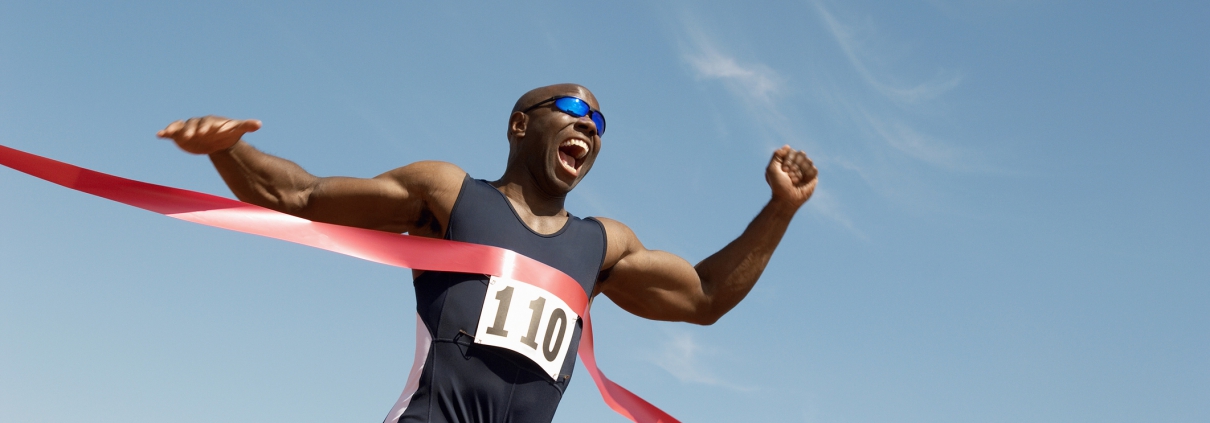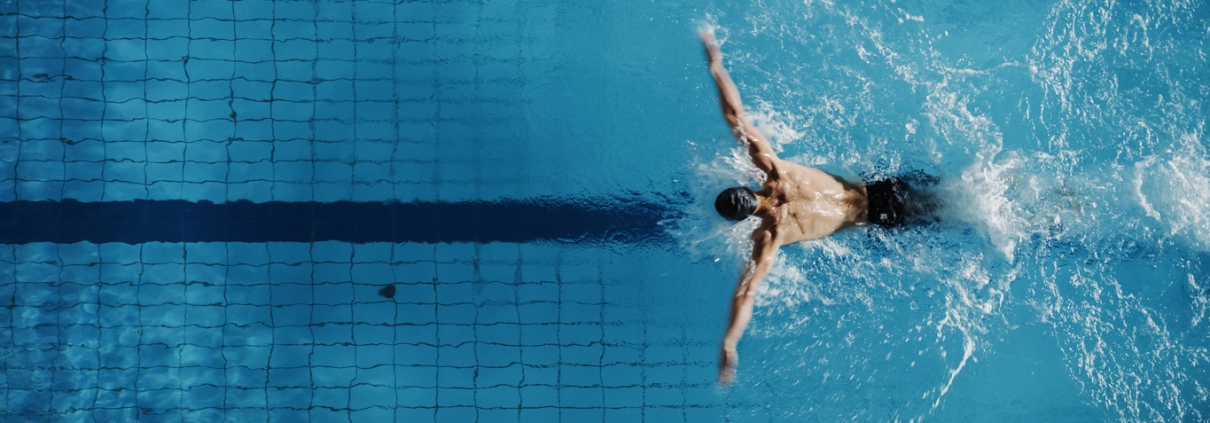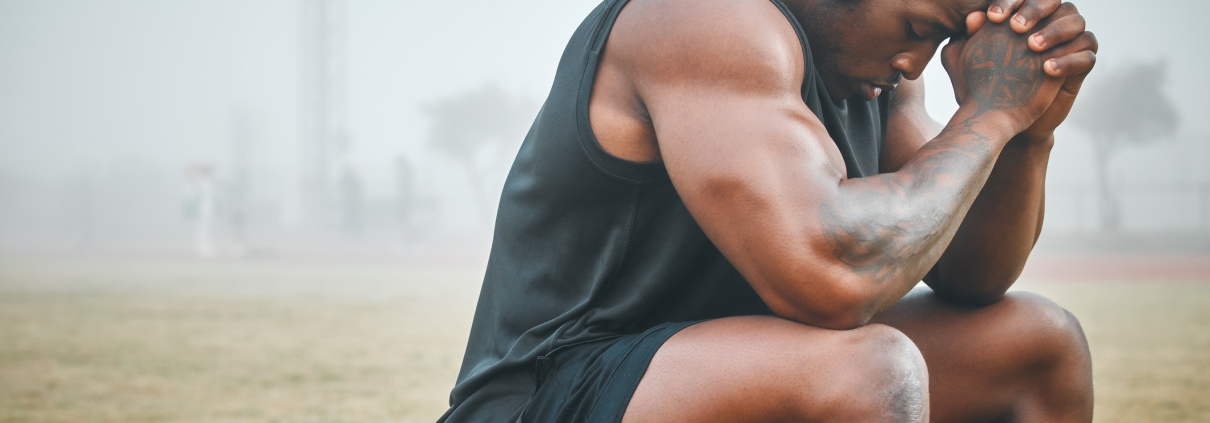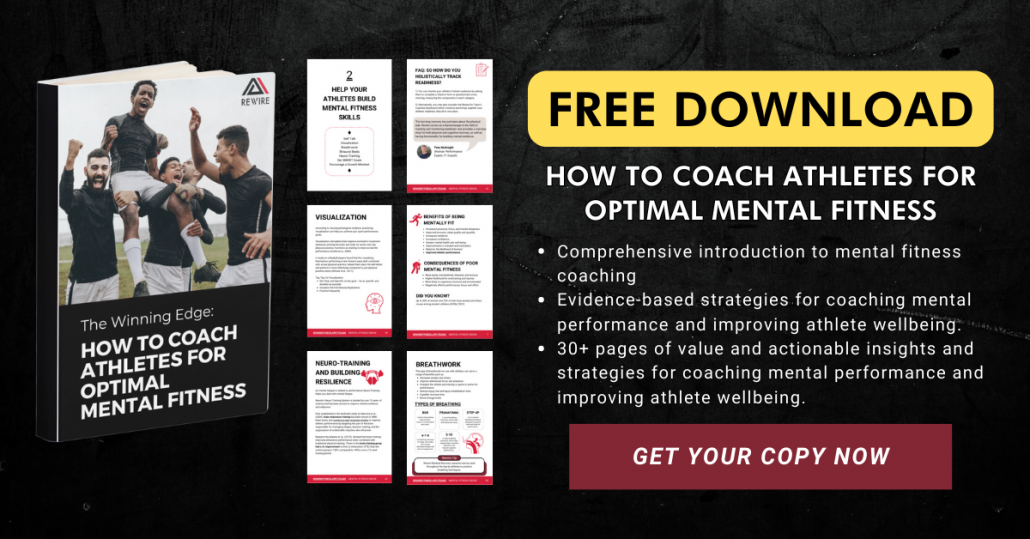Visualization Techniques: A Guide to Unlocking Your Ultimate Performance Potential
As children, we were always taught to use our imaginations when we were playing. How often do you remember creating vivid worlds that felt so realistic with your friends? This is what Corbin (1972) would define as visualization or the “repetition of a task, without observable movement, with the specific intent of learning”. Visualization (which is also called imagery) is simply using your imagination as a mental training. However, as we got older this skill was covered by other skills within our brain. The use it or lose it principle can be applied to our imagination, and relearning how to apply it to sports can enhance your athletic potential and abilities.
Several studies have shown the benefits of using imagery and how it plays a role in athletic performance. Visualization for athletic performances dates back over 100 years. One of the strongest early models came from Bioinformational Theory back in the 1970s, which has been validated by modern neuroimaging techniques (Lang, 1977,1979). Lang’s Bioinformational Theory has made the hypothesis that the mental responses from an imagery script are functionally equivalent in the brain. Meaning, visualization is a way of creating mental reps for several skills. In addition, modern day imaging has shown that when practicing skills, visualization uses the same neural pathways in the brain, minus the motor cortex which executes the physical skill (Decety,1996). Visualization has been a go-to skill for both Olympic athletes and coaches to utilize during their training (Jowdy et al., 1989). Michael Phelps was an avid user of imagery and mentioned that visualization was almost videotape running through his head.
This article will cover four ways to use visualization:
- Skill Development
- Building Confidence
- Motivation
- Energy Management
SKILL DEVELOPMENT
One of the easiest ways to use visualization is for skill development. Indeed, imagery can be used to create new strategies, solve-problems or practice existing skills when physical practice time is limited (Munroe-Chandler & Morris, 2011). This also includes time outside of the weightroom. In 2018, a meta-analysis done by Paravlic et al., found that athletes who performed motor imagery to practice muscular voluntary contractions (MVS) increased their MVS greater than the no-exercise group, but less than those who were in the weight room regularly.
Apolo Ohno, the most decorated winter Olympian in US history, was known for breaking a sweat during his visualization practices. Ohno was an avid user of imagery in his mental training and had this to say about his visualization practice:
“I think the mental component is probably the most overlooked part of any training regimen. It’s never inside any training program or manual. There’s never a time that says, ‘mental prep’ or ‘visualization time’. It was a real critical piece for me. It was literally the difference between me winning and me not even making it into a final oftentimes.”
— Apolo Ohno
BUILDING CONFIDENCE
Another way of using imagery in your mental training is to work on your confidence in specific situations. In the late 1970s psychologist Albert Bandura found that there were several ways to build self-efficacy, which can be applied building confidence in high performing athletes. Visualization can be a powerful technique and one of the ways Bandura noted that efficacy can be built to help people reach their potential. One study (Abma et al., 2002) showed some benefit to using visualization to build confidence, and that high performing athletes are already using visualization! This technique can be used to practice achieving a desired outcome, which has been shown by several studies (see Callow et al., 2001; Mortiz et al., 1996; Vadocz et al., 1998) to be linked to a positive development of motivation. Meaning, the more you see yourself successfully practicing a skill, climbing a mountain, the more motivated you’ll be when you actually do it. While using visualization, athletes can rethink a time when they felt confident, or imagine themselves practicing a skill or running a race with confidence. Rewire has several readiness assessments which you can use to jumpstart your visualization training. My personal favorite is found in the Pre-Flight Checklist where you visualize your game plan. If you’re reading on mobile, click here to open the pre-flight checklist on the Rewire app.
MOTIVATION
Another way to use visualization is to learn how to motivate yourself. Paivo (1985) discusses in his model that athletes can practice this by imagining themselves standing on top of a podium after winning a competition. Another way of practicing motivation is by thinking of a motivating image (moments, colors, animals, etc), that elicit meaning for the athlete. Athletes can also use motivation visualization to help them mentally stay present during long extended training bouts to reconnect to the reason why they’re training.
ENERGY MANAGEMENT
Nerves under high pressure situations are always going to be present, but you can use visualization to practice remaining in control of them. This is a great strategy to pair with practicing breathwork during intense performances. It can also be used to relax yourself before bed. Athletes can practice coping and remaining in control of their emotions during difficult situations. Think about a quarterback who needs to remain composed while trying to throw a game winning touchdown. Or, how about an Ironman athlete who needs to stay in control while hitting the proverbial wall? Imagery can help you mentally rehearse how to overcome difficult situations.
WHEN CAN YOU USE VISUALIZATION?
The beautiful thing about visualization is that since it’s practice away from practice, you can practice visualization anywhere! I remember reading an excerpt from Mark Champagne’s Personal Socrates on Apolo Ohno. Champagne wrote that when practicing imagery on an airplane, Ohno would break an actual sweat because it was so intense. Holmes & Collins (2001) write that when practicing away from practice, athletes can wear their uniform or practice in a similar environment to where they’re performing and do their imagery practice. Athletes can also use pictures or videos of where they will compete to complement their visualization practice. Here’s a more in depth guide on how to create and implement a visualization practice.
Five tips to get started:
- Start off practicing your skill slowly in your head, then bring it to full speed. Just like starting out a new skill at half the tempo, you can practice the biomechanics in your head.
- Make it realistic. Michael Phelps often referred to this as having a video tape running in his head.
- Practice both visualizing yourself from a 1st and 3rd person perspective. Start out with first, then third, then both
- Start off with small pieces of your sport, then start imagining the entire thing if you’re an endurance athlete
- Check out our top 7 visualization tips for beginners
PRACTICE VISUALIZATION WITH REWIRE
Rewire’s Mindset Recovery collection offers protocols which include visualization, self-talk, binaural beats, subliminal priming and breathwork, allowing you to increase your performance confidence and experience the benefits of visualization anywhere you need.
Visualize your success and unlock your ultimate performance potential by downloading Rewire’s free app today.

References:
Abma, C. L., Fry, M. D., Li, Y., & Relyea, G. (2002). Differences in imagery content and imagery ability between high and low confident track and field athletes. Journal of Applied Sport Psychology, 14(2), 67–75. https://doi.org/10.1080/10413200252907743
Bandura, A. (1977). Self-efficacy: Toward a unifying theory of behavioral change. Psychological Review, 84(2), 191–215. https://doi.org/10.1037/0033-295X.84.2.191
Callow, N., Hardy, L. and Hall, C., (2001). The effects of a motivational general-mastery imagery intervention on the sport confidence of high-level badminton players. Research Quarterly for Exercise and Sport,72, 389-400.
Corbin, C. (1972). Mental practice. In W.P. Morgan (ED.), Ergonomic aids and muscular performance (pp.94-116). New York: Academic Press.
Decety, J. (1996). The neurological basis of motor imagery. Behavioral Brain Research, 77, 45-52.
Holmes, P. S., & Collins, D. J. (2001). The PETTLEP approach to motor imagery: A functional equivalence model for sport psychologists. Journal of Applied Sport Psychology, 13 (1), 60–83. https://doi.org/10.1080/104132001753155958
Jowdy, D., Murphy, S.M., & Durtschi, S.K. (1989). An assessment of the use of imagery by elite athletes: Athlete, coach, and psychological perspectives. Colorado Springs, CO: Olympic Sports Committee.
Lang, P.J. (1979). Imagery in therapy: An informational processing analysis of fear. Behavior Therapy, 8, 862-886.
Lang, P.J. (1977). A bio-informational theory of emotional imagery. Psychophysiology, 16, 495-512.
Moritz, S. E., Hall, C. R., Vadocz, E., & Martin, K. A. (1996). What are confident athletes imaging? An examination of image content. The Sport Psychologist 10, 171-179.
Munroe-Chandler, K., & Morris, T. (2011). Imagery. In T. Morris & P. Terry (Eds.), The New Sport and Exercise Psychology Companion (pp. 275–308). Fitness Information Technology.
Paivo, A. (1985). Cognitive and motivational functions of imagery in human performance. Canadian Journal of Applied Sport Science, 10, 22-28.
Paravlic, A. H., Slimani, M., Tod, D., Marusic, U., Milanovic, Z., & Pisot, R. (2018). Effects and dose–response relationships of motor imagery practice on strength development in healthy adult populations: A systematic review and meta-analysis. Sports Medicine, 48(5), 1165–1187. https://doi.org/10.1007/s40279-018-0874-8
Perry, C., & Morris, T. (1995). Mental imagery in sport. In t. Morris & J. Summers (Eds.), Sport psychology: Theory, applications & issues (pp. 339-385). Brisbane, Australia: John Wiley. Vadocz, E. A., Hall, C. R., & Moritz, S. E. (1997). The relationship between competitive anxiety and imagery use. Journal of Applied Sport Psychology, 9(2), 241–253. https://doi.org/10.1080/10413209708406485









